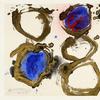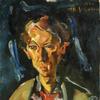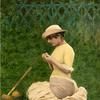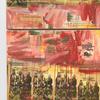North Carolina Museum of Art To Present 'Golden Mummies of Egypt'
- RALEIGH, North Carolina
- /
- October 21, 2020
The North Carolina Museum of Art (NCMA) announced the February 13, 2021, opening of Golden Mummies of Egypt from the Manchester Museum in England, the exhibition’s first appearance at an American art museum. On view through July 11, 2021, it features eight extraordinary gilded mummies and more than 100 related objects including papyri, jewelry, ceramics, and deities that connect the domestic, daily sphere of these Greco-Roman Egyptians to the religious world of the gods. Ticket information is available online.
Golden Mummies of Egypt explores beliefs about the afterlife during the relatively little-known era when Egypt was part of the Greek and Roman worlds (circa 300 B.C.E.–200 C.E.). In a series of lavishly illustrated thematic sections, it showcases the outstanding collections of the Manchester Museum to allow visitors to examine life for the wealthy in multicultural Roman Egypt, where diverse Egyptian, Roman, and Greek communities and cultural influences were blended.
“People have been clamoring for mummies since I joined the Museum in 2005,” says Egyptologist and Curator of Ancient Art Caroline Rocheleau. “Manchester Museum has made this happen in a most spectacular way. What I love about this exhibition is that it’s more than just mummies—it’s about hopes for the afterlife at a time in Egypt when Egyptian, Greek, and Roman cultures blended together.”
Excavated from Hawara, Egypt, south of modern-day Cairo, the mummies and related objects offer glimpses into where the people lived, what they believed, and their unique blend of cultural traditions during this time. The exhibition sends visitors on a journey exploring seven key themes: life in a multicultural society, ideas about the afterlife, becoming a god, the art of identity, meeting the gods, preserving the body, and the mummies’ modern discovery.
The practices of preservation and decoration of the body, and the transformation of the deceased into a god, are spectacularly shown by the mummies on display. The exhibition also traces expectations for the afterlife and introduces cultural constructions of identity, strikingly demonstrated by haunting painted panel portraits. These portraits not only preserve a rare corpus of ancient painting but also present modern viewers with a series of human likenesses that literally and figuratively bring them face to face with the past.
Visitors can learn more about three of the mummies by using digital interactives to see underneath the wrappings, thanks to data gathered through digital radiography paired with multidirectional CT scanning. They will explore the gold coverings, or gilded skin, that transformed these everyday citizens into gods, using the power of this eternal metal that won’t tarnish or decay. A catalogue with deeper context about these objects, the excavation, and more, will be available for sale in the Museum Store.
“Golden Mummies of Egypt represents a crossroads of cultures, where elaborate, deliberate preparations for the afterlife were informed by multiple time periods and geographies,” said Museum Director Valerie Hillings. “Using art and science together, we’re able to explore concepts around humanity, divinity, and ideals of eternal beauty.”
The exhibition also ties into Museum’s collection, where Greco-Roman objects are displayed in the Egyptian and Classical galleries, including the Gilded Mummy Covering, circa 300 B.C.E; Aphrodite-Isis from the 1st–2nd century; and the Portrait Head of a Coffin, circa 100–150 C.E. After visitors view Golden Mummies, they can visit the free Museum collection to see more gold and mummy-related objects from this period and beyond.

270x400_c.jpg)

10270x400_c.jpg)
__A270x400_c.jpg)
270x400_c.jpg)
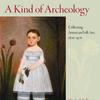


![Peter Paul Rubens (Flemish, 1577–1640), After Titian (Tiziano Vecelli) (Italian [Venetian], c. 1488–1576), Rape of Europa, 1628–29. Oil on canvas, 71 7/8 x 79 3/8 in. Peter Paul Rubens (Flemish, 1577–1640), After Titian (Tiziano Vecelli) (Italian [Venetian], c. 1488–1576), Rape of Europa, 1628–29. Oil on canvas, 71 7/8 x 79 3/8 in.](/images/c/e2/2e/Jan20_Rape_of_Europa100x100_c.jpg)
